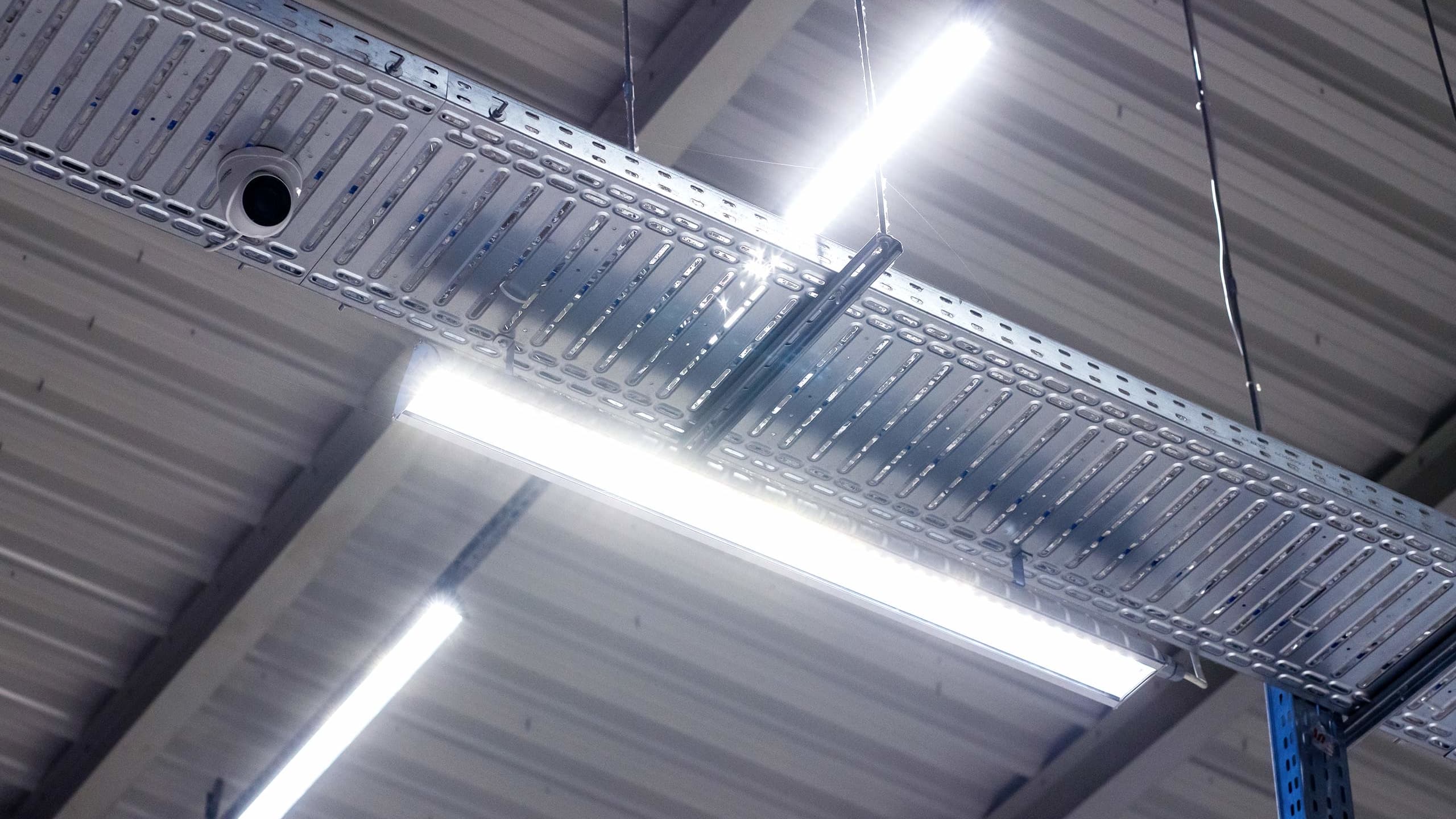Every one of us has, on more than one occasion, experienced dazzling light, which, in practice, is known asdiscomfort glare. Commonly referred to as glare, this effect adversely affects the eyes, reducing vision and recognition. As a result, the comfort of the room is significantly reduced and work becomes less efficient.
This article deals with the following:
- What is glare and discomfort glare?
- How does the measurement of illuminance relate to it?
- Which workplaces are most exposed to glare?
- Glare effect and light sources.
- How to mitigate discomfort glare?
What is glare?
The evaluation of the quality of lighting in rooms involves a number of criteria. Among other things, light intensity, colour and glare are evaluated. All of these affect the quality of vision.
By definition, glare is understood as lighting conditions in which the user is uncomfortable or details of objects in the field of vision are difficult to perceive. This usually occurs when the luminance has an inappropriate range or distribution. It can also be caused by inadequate contrast of the illumination of the object under observation in relation to its surroundings. In both cases, too much of a concentrated beam of light reaches the user and is reflected either by objects or by the light source. Such an effect, due to the perception problems, can cause irritation and, in workplaces, even result in health risks.
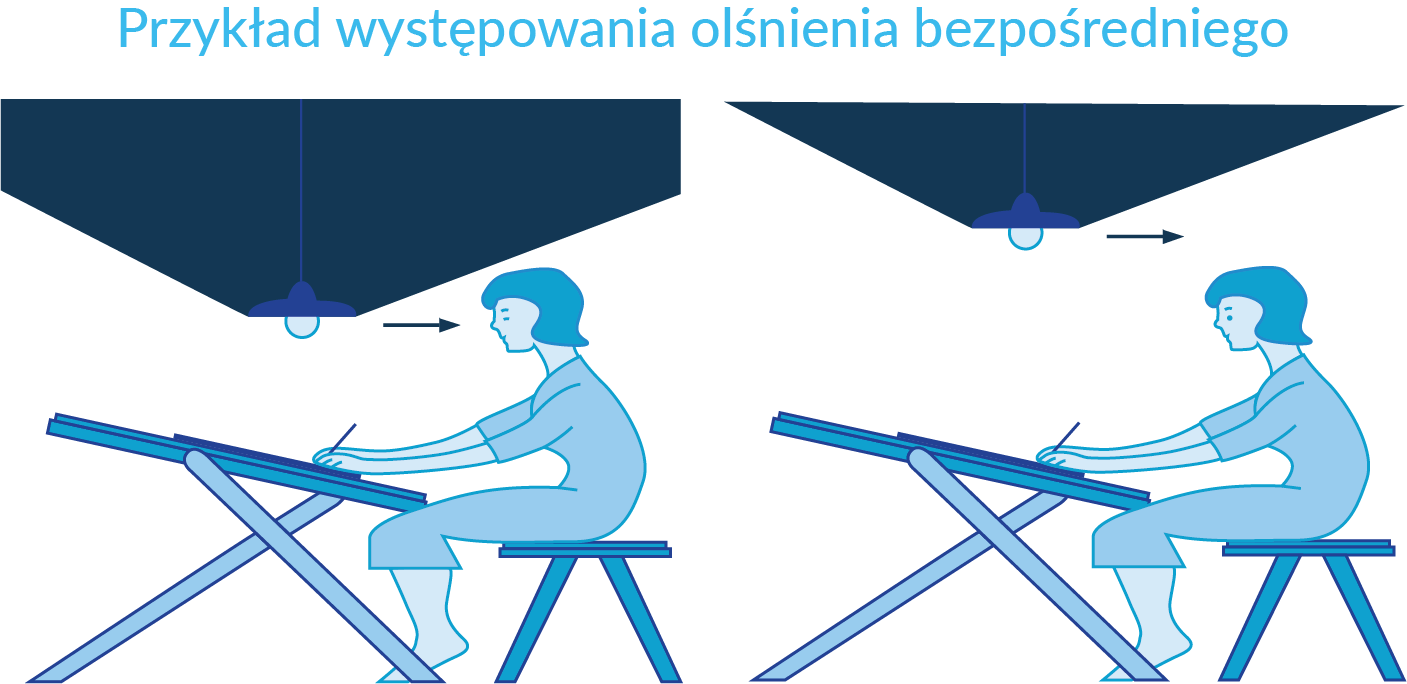
Discomfort glare – what is it?
There are different types of glare. They can be divided into two subgroups. The first classifies glare according to the type of radiation reaching the eye of the observer. This division distinguishes between:
| direct glare | indirect glare | reflected glare |
| it comes from the light source and directly hits the eye of the observer | it happens in the case of intense luminance, the source of which is next to the observed object | it occurs as the reflection of light beams from objects close to the object under observation, e.g. furniture, walls |
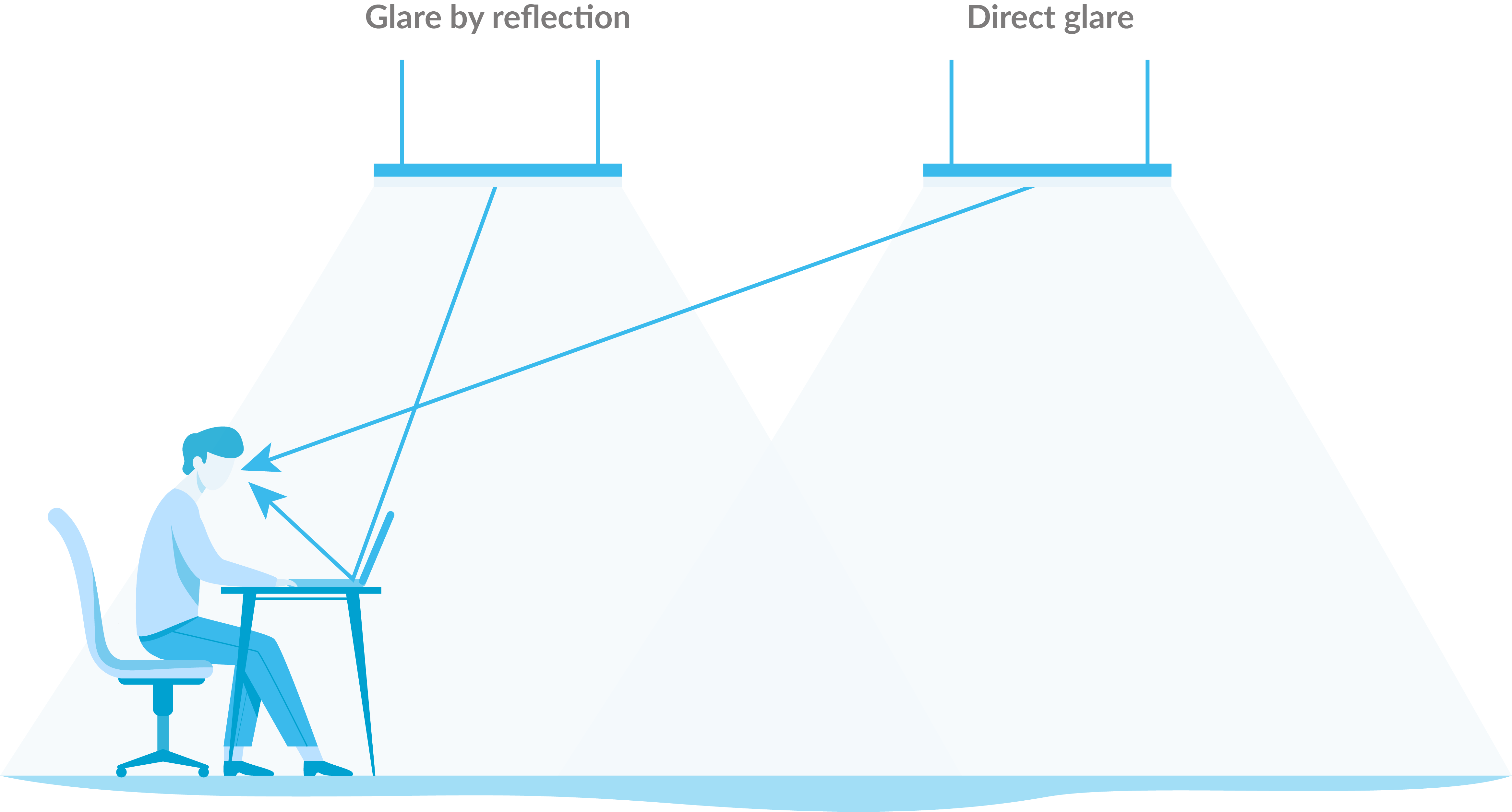
Each of the above types of glare can cause different effects. Some may be less and others more disruptive to room users. Because of this, glare can be disturbing, cause discomfort or dazzling.
Disruptive glare can temporarily impair the ability to see or distinguish colours. However, in such cases, the recovery time is short, literally a few minutes.

Workplaces are most often exposed to discomfort glare, which only causes discomfort in the short term. However, in places where this effect occurs and people are in it for several hours every day, the effects can be much worse and unrelated at first sight. Exposed to prolonged discomfort glare, workers often experience eye fatigue, irritability and also stress.
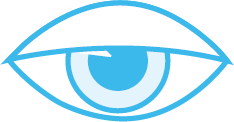
Dazzling glare is associated with exposure to high luminance values. Even a short moment of exposure to the human eye can cause a short-term lack of vision. Usually such an effect is caused by direct light from the luminaire.
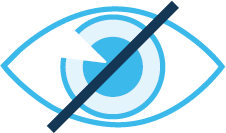
Measurement of illuminance
When assessing glare, the term luminance, often used in photometry, is referred to. This is a measure of the intensity of light that falls in a given direction and is given in candelas per 1 m² (cd/m²).
It is usually assumed that for discomfort glare to occur, the light source must have a luminance greater than 500 cd/m². In contrast, direct glare with a luminance above 700 cd/m² most often causes significant discomfort.

Visual glare, or the feeling of distress resulting from glare, is related to several parameters. These include the dimension, angle of illumination and number of luminaires, as well as the aforementioned source and background luminance. The assessment of glare is based on the Unified Glare Rating (UGR). This enables glare to be analysed at the workstations included in EN 12464-1.

Where
- Lt – background luminance, cd/m²
- LZ – light source luminance, cd/m²
- pi – the Guth index of the observer’s luminous position relative to each luminaire, which refers to the position of the luminaire relative to the line of sight,
- ωz – solid angle of the light source as determined for the observer.
Both, EN 12464-1 and the method adopted by the International Committee on Illumination (CIE) allow for a tabular analysis of the UGR.
Table. Scale of UGR limit values and perceived discomfort glare.
| Subjective assessment of the discomfort glare perceived | CIE limit value scale for UGR | EN 12464-1 scale of UGR limit values |
| Unbearable glare | 28 | 28 |
| Glare between intolerable and uncomfortable* | 25 | 25 |
| Glare causing discomfort | 22 | 22 |
| Glare between uncomfortable and acceptable* | 19 | 19 |
| Still acceptable glare | 16 | 16 |
| Glare between acceptable and perceptible* | 13 | – |
| Barely perceptible glare | 10 | – |
*name of subjective feeling as determined by the author
Based on Dr Agnieszka Wolska Central Institute for Labour Protection – National Research Institute, How does the glare change with the different position of the observer’s eye?, Occupational Safety 2012
[2] Publication CIE No. 55: 1983 Discomfort glare in the interior working environment
[4] B¹k J. Technika oświetlania. Warsaw, PWN 1981
Workplaces exposed to glare
The glare is quite common. It occurs, among others, in public, office, industrial spaces and at homes. In some of these areas, the effects it causes can be more or less adverse. Due to the type of activities involves, all types of glare are dealt with. However, with regard to time at the workplace and the possibility of removing the source of the problem, discomfort glare is crucial.
Office work is particularly exposed to the factor of discomfort and reduced ability to see. Working for several hours or more, as well as activities in front of a computer monitor, exacerbate the effects associated with an inadequately adjusted light source.
Minimising the effect of glare is also advisable at production workplaces and in sales areas.

Light sources and reduction of the ability to recognise details
Recognising and assessing glare as a condition that has adverse effects on the space users is of utmost importance. It is related to efficiency and safety at work, as well as the well-being of employees. A UGR that is too high can cause a reduction in the ability to recognise details and result in a reduction in the efficiency of the work carried out. Properly selected lighting, which has a level of glare that is comfortable for the eyes, increases employee efficiency.
How to mitigate glare?
The lighting of workplaces should first of all be adapted to the activities carried out in the areas concerned. This should already be kept in mind when designing a lighting system. The effect of glare can be minimised by applying a number of principles, e.g:
- installation of luminaires with a low UGR,
- appropriate installation of luminaires – not directly above the workplace,
- decentralised lighting system e.g. several luminaires with lower luminance,
- lighting at different angles directed at the workstation,
- avoidance of glossy surfaces,
- maintaining adequate contrast between the background and the illuminated surface.

Note that only the combination of a light source with a low glare factor and the correct installation of the light source will guarantee the minimisation of the discomfort glare. This is because, at different positions of the observer’s eye, the UGR from a given luminaire will vary, also due to the direction of the user’s gaze.
Are you looking for lighting that will make your employees comfortable and increase their efficiency? Send your inquiry on the form and we will help you select a system that minimises glare.
Also find out what standards and requirements office lighting must meet.

Do you have additional questions?
Ask our expert
See other articles
Lumens to watts – how to convert the luminous flux?
The luminous flux of LED lighting is given in lumens. With traditional light sources, on the other hand, the luminous intensity was usually determined as the power they consumed in watts. To be able to at least compare the two sources to some extent, it is necessary to convert lumens to watts. Therefore, in this article we address this issue.
What is BMS?
BMS is an acronym that stands for Building Management System. It controls multiple technical functions of a building and its immediate surroundings.

Masz dodatkowe pytania?
Zapytaj naszego eksperta



